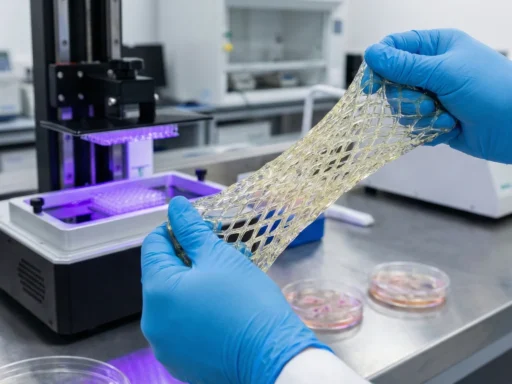Presented as part of the Time, Space, Existence exhibition organized by the European Cultural Centre (ECC) in Venice, the Diamanti bridge is the joint creation by a multi-institutional team led by Professor Dr. Masoud Akbarzadeh and the Polyhedral Structures Laboratory at the University of Pennsylvania.
Fabricated at two scales, the small prototype was produced by Dutch firm Vertico, while the full 10-meter canopy version was 3D printed by Carsey3D in France. The bridge is composed of nine prefabricated concrete segments, each robotically printed using a two-component cementitious mix developed by Sika. Engineered with embedded voids and diamond-shaped anticlastic surfaces, these segments optimize load distribution while reducing material use and embodied carbon.
Eight steel cables hold the segments together in a reversible post-tensioned system. With no adhesives or grout, the bridge can be fully dismantled and recycled, presenting a truly modular and sustainable construction approach.
“Through 3D concrete printing, post-tensioning, and geometric innovation, we’ve achieved high structural performance with minimal material,” Akbarzadeh said in an interview. The design uses polyhedral graphic statics (PGS) to align form with principal stress directions while integrating internal channels for the tensioning cables.
By blending computational geometry, modular construction, and additive manufacturing, Diamanti is a showcase of how infrastructure evolves toward greater efficiency, reduced carbon footprint, and full material recyclability.






